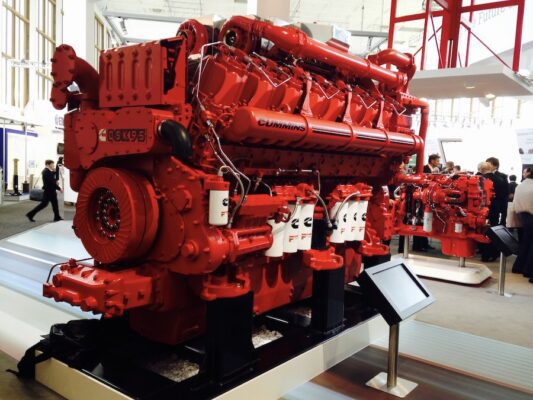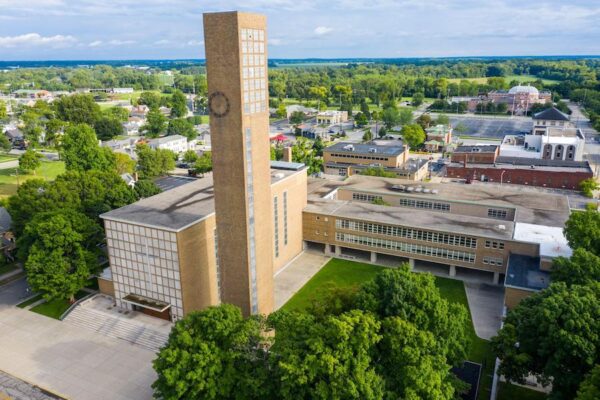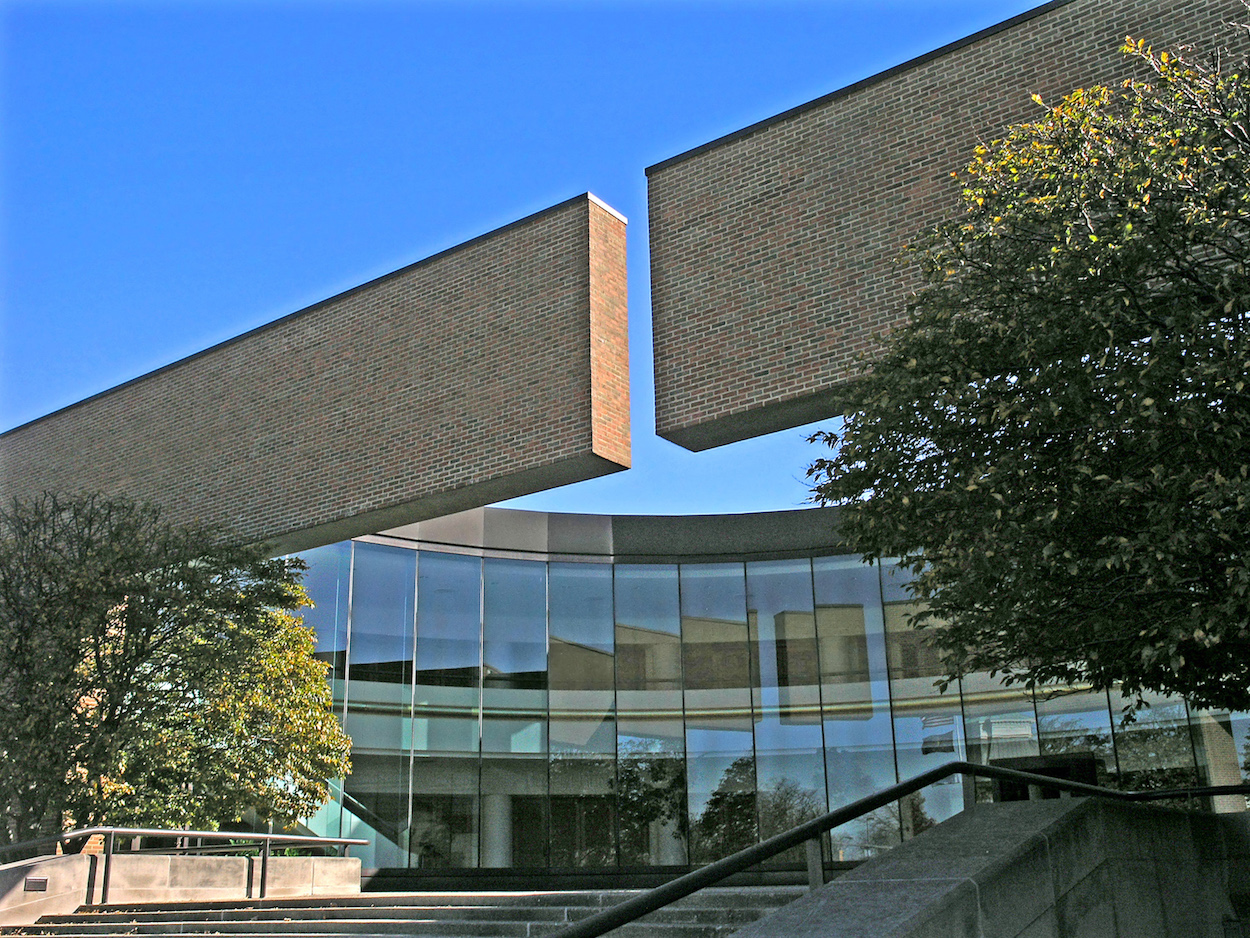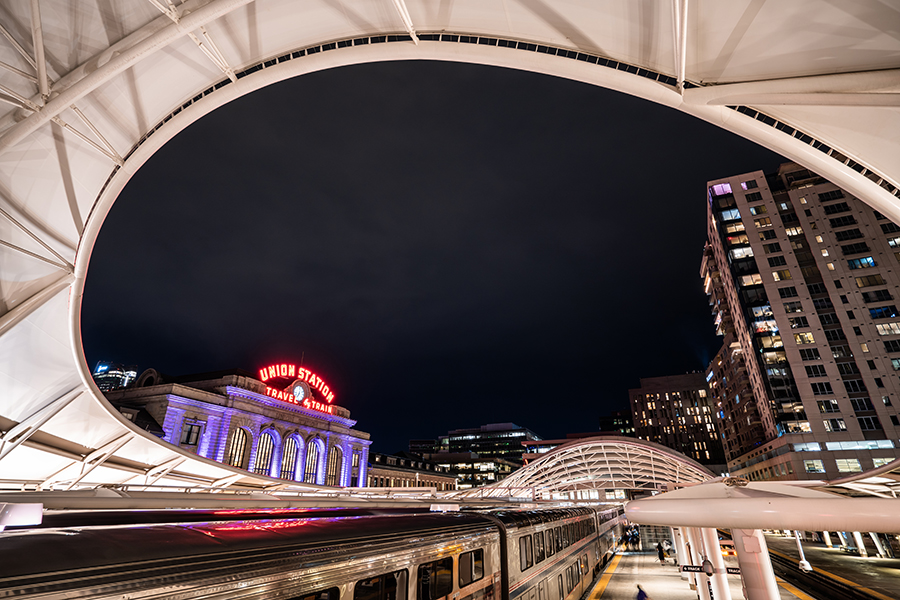Plans are well underway for a new regional rail route connecting communities in Colorado’s Front Range, one of the fastest-growing regions in the country.The Front Range runs nearly 200 miles along the eastern foothills of the Rocky Mountains—south to north from...
Summary
Columbus, Indiana, is routinely discovered and celebrated by national media. And it's a place that should be connected by trains.
Columbus, Indiana, is routinely discovered and celebrated by national media. And it’s a place that should be connected by trains.
A city of 50,000 people about 30 miles south of Indianapolis, it ranks alongside cities like Chicago and San Francisco for its world-class architecture. Seven of its buildings are designated as National Historic Landmarks. “The sheer quantity of monuments designed by some of the greatest 20th-century architects is astonishing,” The Architect’s Newspaper noted in March 2023. “More remarkable is that they’re almost all public and institutional buildings.” A 2017 coming-of-age movie titled Columbus—which featured several of the city’s iconic buildings, and brought Columbus to the attention of a global movie audience—has been a big driver of recent media interest.

Cummins engines power the Siemens Charger locomotives pulling Amtrak trains across the country.
Cummins, a Columbus-based engine maker that employs about 60,000 people worldwide, is the major force behind the city’s architectural excellence. The company was founded in 1919. Its chairman from the early 1950s through the late 1970s, J. Irwin Miller, had a compelling vision for the city’s future, and the resources to push that vision forward. “We would like to see this community come to be not the cheapest community in America, but the very best community of its size in the country,” he said. “We would like to see it become the city in which the smartest, the ablest, the best young families anywhere would like to live.”
World-class architecture was key to Miller’s vision, which endures in what locals call the Columbus Way—i.e., the practice of “always looking forward, creating not only for today, but for generations to come.”
Half a century after Miller helped transform Columbus into an architectural mecca, opportunity knocks once again. The city isn’t currently served by passenger trains—but fast, frequent, and affordable service would be transformative for the city’s economy and quality of life in three key ways.
First, it would be a big boost to tourism. A Chicago to Atlanta railroad line, which would run through Columbus, is among the most promising corridors for high-speed rail in the U.S. The trip from Nashville or Chicago to Columbus is about 3.5 hours by car. It would be under 3 hours with high-quality conventional train service. It would be under 2 hours with high-speed trains. And those are just the biggest cities on the Chicago-Atlanta line. To the east, Cincinnati is less than 100 miles away, and St. Louis is less than 300 miles to the west.

First Christian Church, by Eliel Saarinen, Columbus, Indiana
So, trains could make Columbus an easy day trip for tens of millions of people in these major cities, as well as the dozens of mid-sized communities in between. Taking the train would be faster and safer than driving. And it would be faster, cheaper, and more convenient than flying, which involves the time and expense of renting a car at the Indianapolis airport. By contrast, trains could deliver people right to the city itself.
Second, high-quality train service would be a boon for workers and students across Central Indiana. If the commute from Columbus to Indianapolis and Lafayette (or vice versa) were a comfortable train trip, they could read or relax on the way to and from work, instead of navigating clogged highways. Which would make Columbus a more attractive place for people to work, put down roots, and raise a family.
Third, an all-in commitment to trains would help Columbus—and the Midwest—revitalize and expand their manufacturing bases.
Cummins is an innovator in the technology that powers trains across the world. For example, it recently announced that a fleet of 14 zero-emissions passenger trains in Lower Saxony, Germany, were equipped with its fuel cell systems. Cummins noted that “we are innovating fuel cell and hydrogen technology that can essentially convert existing infrastructure built for diesel trains into zero-emissions railways without expansive and expensive rail electrification.”
Cummins’s partner was the train maker Alstom, which also builds the high-speed trains that Amtrak is rolling out in the Northeast Corridor this year. The new Acela trains are manufactured in Hornell, New York, where the company had about 200 employees in 2016. It now has roughly 1,000. Hornell’s former mayor said of Alstom that “it is a transformative development project that is basically unheard of in rural America and if it can happen here, it can happen throughout the United States.” Alstom’s U.S. supply chain includes about 170 companies across 27 states.
There is deep irony in the fact that Cummins, an innovator in train-power technology, is headquartered in a city that isn’t served by passenger trains—and in a region that has only bare-bones train service. But in that irony, there is also a huge opportunity.
For Columbus, a city that takes pride in “always looking forward,” trains could be the next step in its evolution as a world-class innovator. They’re the future economically, environmentally, and in terms of overall community well-being. Every day, Cummins helps make that truth a reality in cities and regions across the globe.
Now, Columbus and the Midwest could lead the transformation of America’s transportation system with a regional network of world-class train service. It’s what the Columbus Way is all about, after all: “Why we set bold goals. Why we inspire each other. Why we impact the world with unprecedented achievements.”
Taking on big challenges put Columbus on the map, and it’s in the city’s DNA. Which is why trains and the Columbus Way are a perfect match. They’re both about finding better paths forward and creating “not only for today, but for generations to come.”
The Latest from HSRA
Our Latest Blog Posts
Check out the latest news, updates, and high speed rail insights from our blog!



